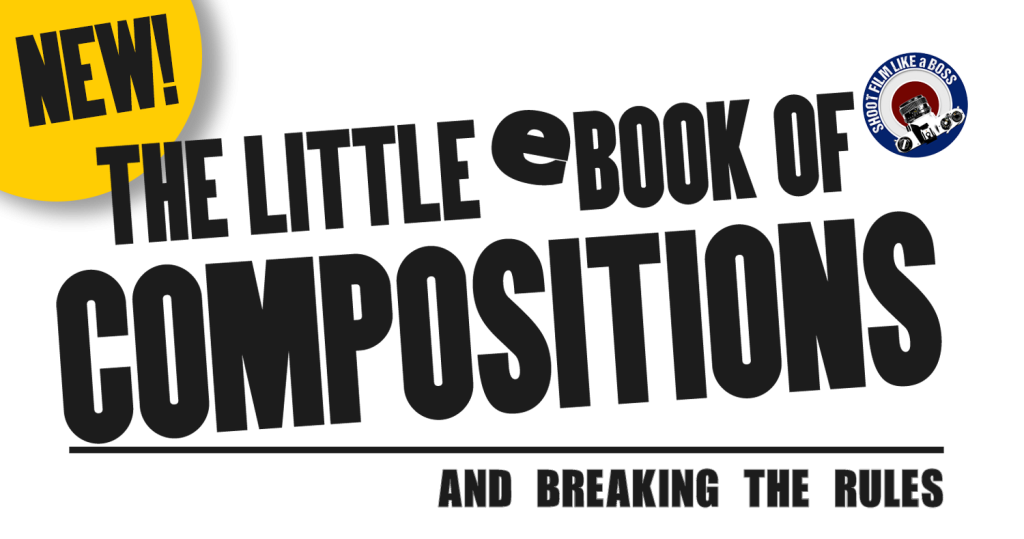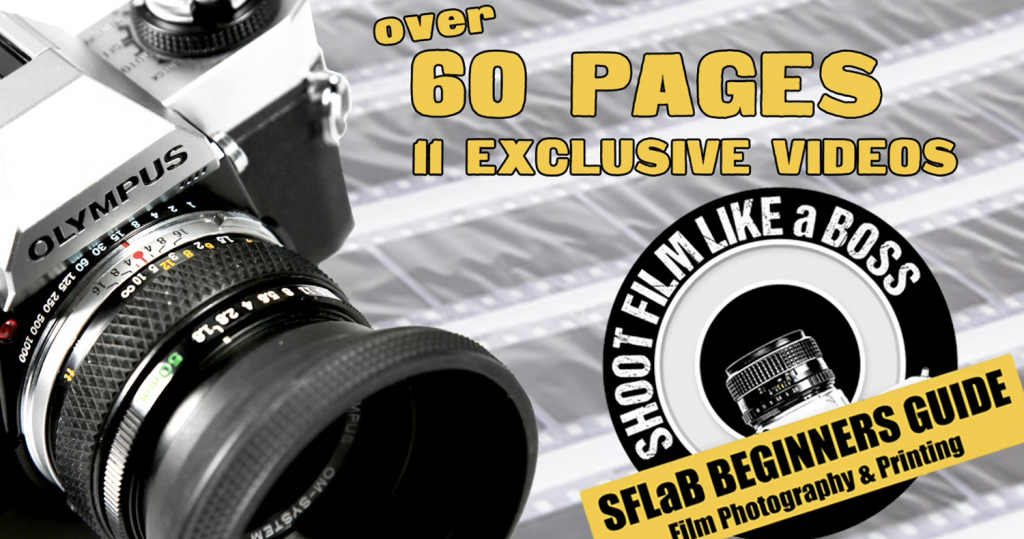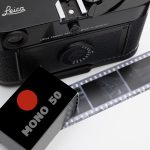

See the video here –
How I got to this
One memorable weekend, my friend Iain rolled into town, using the visit as a perfect excuse for a long-distance ride on his newly acquired Royal Enfield motorcycle. His journey was quite the trek, taking him from Coventry, through Portsmouth, and finally across the water to the Isle of Wight. Along with his riding gear, he brought a trio of cameras: the Pentax 17 I had lent him months before, a classic folding Ensign, and, most notably, a Lomography Horizon Panoramic camera. To my surprise, the Lomo was for me to try! That’s how this unique camera landed in my hands. It sat on my desk for a couple of weeks—a constant, visual reminder that I needed to stop admiring it and start shooting with it.
Limited Options
Despite its impressive 120∘ horizontal sweep, the Lomo Horizon is an exceptionally simple point-and-shoot experience. Its features are minimal, forcing you to embrace its simplicity.
- Lens: A 28mm INDUSTAR MC 8/28 (multi-coated) provides the wide, sharp base for your panoramas.
- Aperture: Fixed at f/8.
- Shutter Speeds: A strict choice between 1/60s (for daylight) and 1/2s (for low light).
- Format: Standard 35mm film, but shooting a huge 24×58mm panoramic frame.
- Focus: Fixed from 2m to Infinity.
- The Catch: There is no tripod mount! You’ll need steady hands and creative balancing if you want to use that slow 1/2s shutter speed.

When you advance the camera the front cover sweeps across the entire front giving you that panoramic shot.
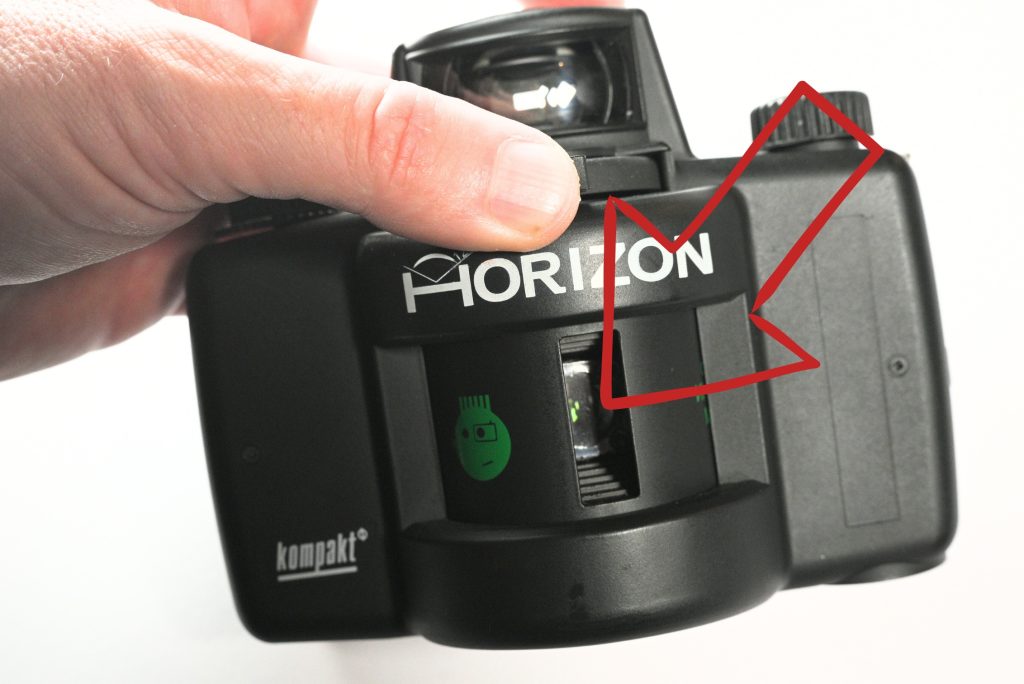
Loading the camera
Loading the Horizon was, unexpectedly, the trickiest part of the process. I quickly discovered the internet is flooded with false or misleading information regarding the loading technique, which has resulted in many photographers ending up with poor negatives. Even the original rule book proved somewhat vague! Determined to avoid the dreaded blurred edges, I took a “duff” (scrap) roll of film and practiced the process repeatedly. My effort paid off when I shot my first real roll, the negatives came out perfectly, with edge-to-edge sharpness. Success! I loaded it right!
You have to feed the film under that fat roller. Not the thin silver roller. The fat one under it.
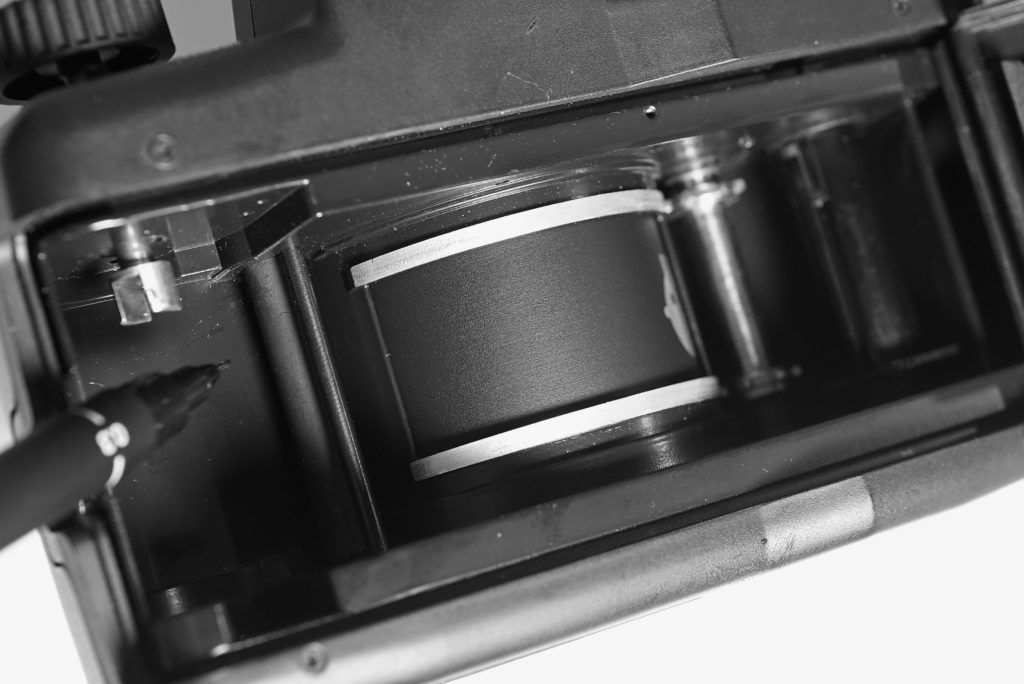
You then pull the film and feed it under the silver sprocket rod.
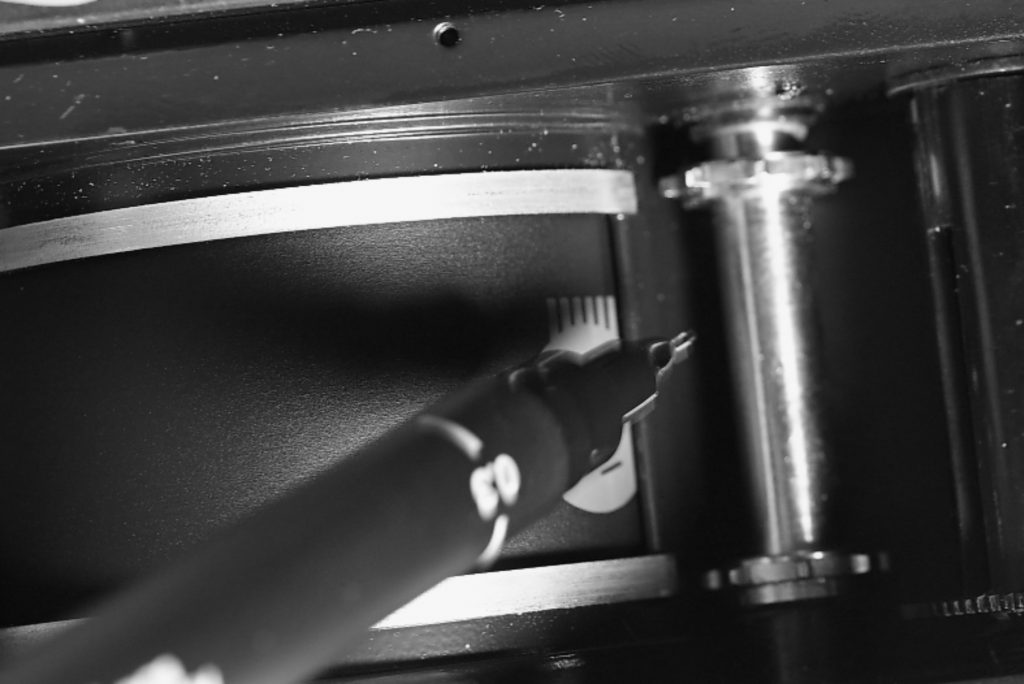
And then under the take-up spool, and feed the leader into the slit on the take-up spool. It helps to put a kink or bend in the end of the leader.
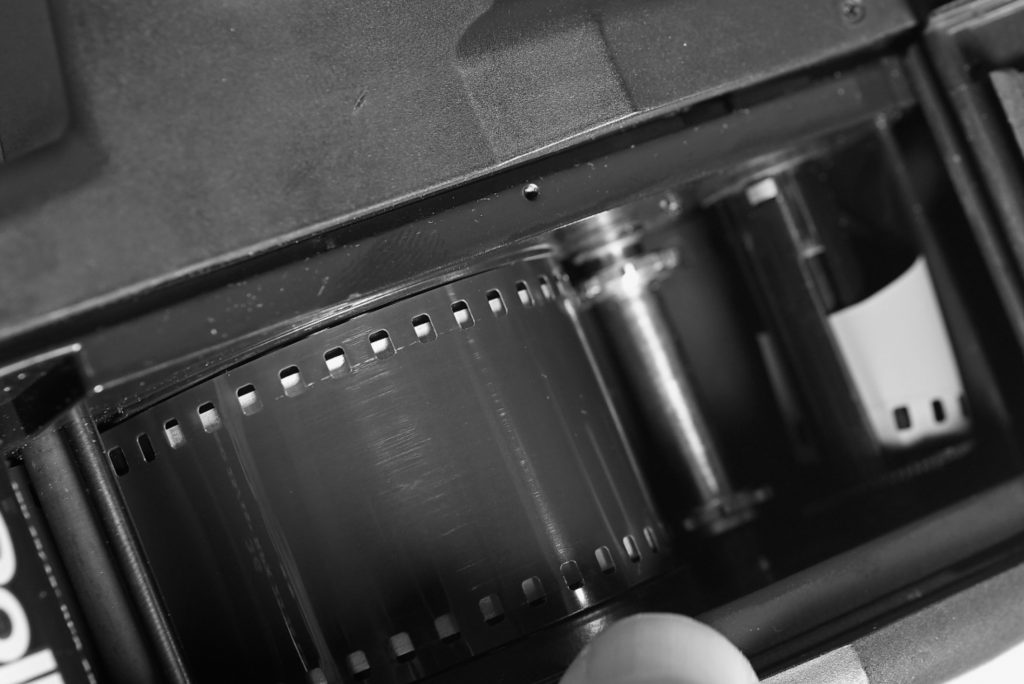
Feed the film onto the take-up spall half a turn and then you should be good to go. The film is now flush against the whole curvature of the film plane.
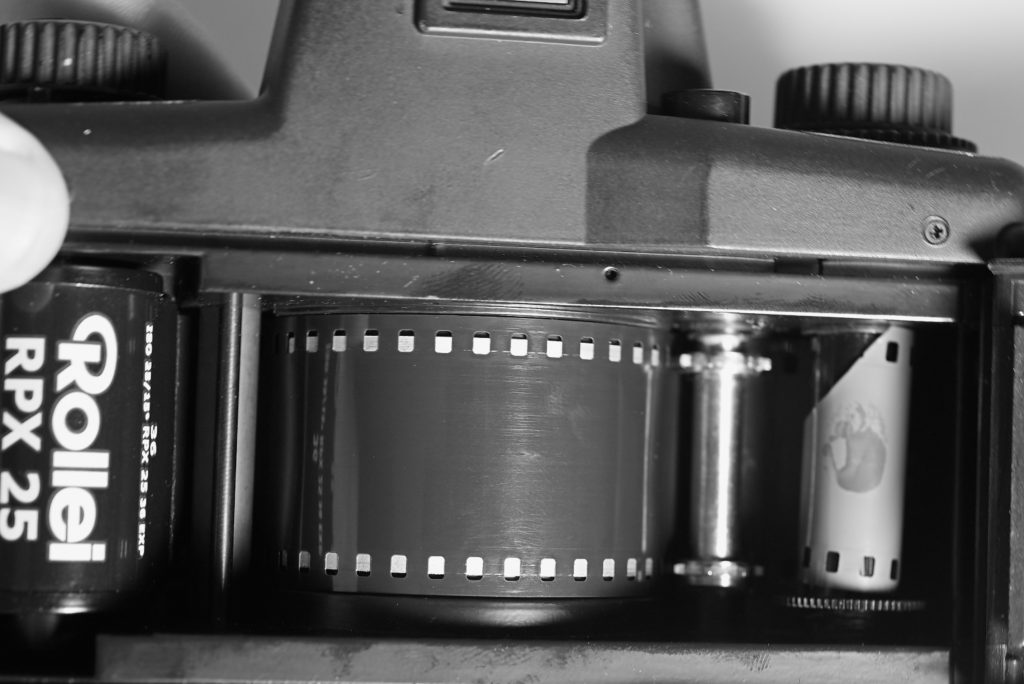
Close the back and then set the counter to ZERO and advance. This can be a bit tricky to get used to so I would advise to try all this with a duff roll of film. I used an old expired film that I know I would never shoot. I’ve used it for ages for tests such as this.
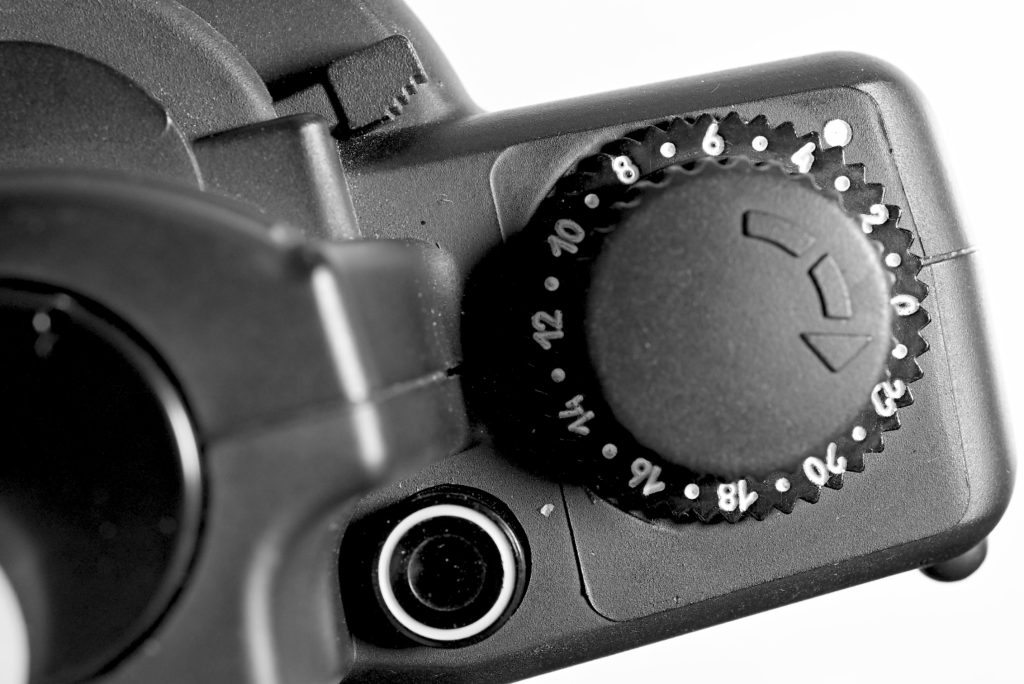
My first experience
You might assume the Lomo Horizon is built like cheap plastic, similar to a Holga. Think again. This camera is built surprisingly tough, with plastics that feel remarkably premium and solid in hand.
To manage my expectations and embrace the camera’s simplicity, I decided to keep my first shoot completely casual. I loaded a roll of Kodak TRI-X 400 (expired 2022) and simply walked to the local shops. I had no grand plan, just a spontaneous urge to point, shoot, and see the results. If the photos were bad, I wouldn’t be disappointed.
The day offered mid-overcast lighting after an earlier rain. The ISO 400 film speed was perfect for these conditions. Since I favor contrasty images, I deliberately composed shots that included bright white elements. My strategy was to slightly over-develop the film later, which would boost the highlights and deliver that punchy, contrasty look I love. For those shooting in full sun, remember that with its f/8 aperture and 1/60s speed, you could easily shoot a slower ISO 100 film.
Here are some images from my first shoot.


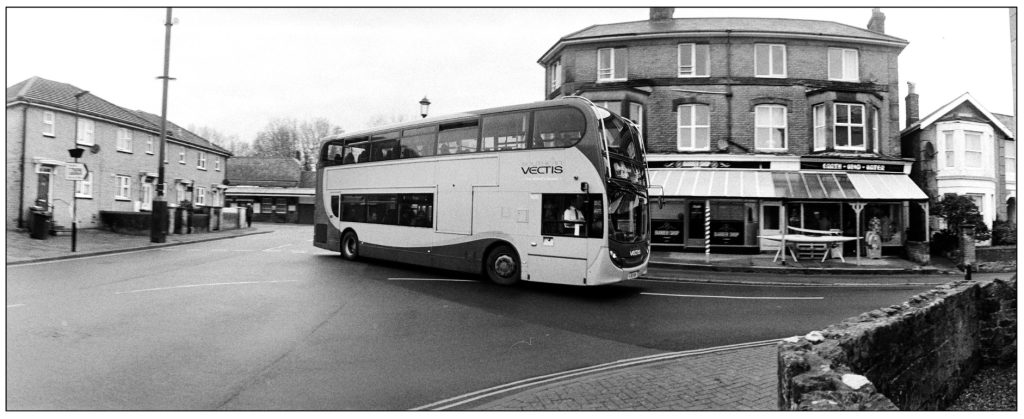
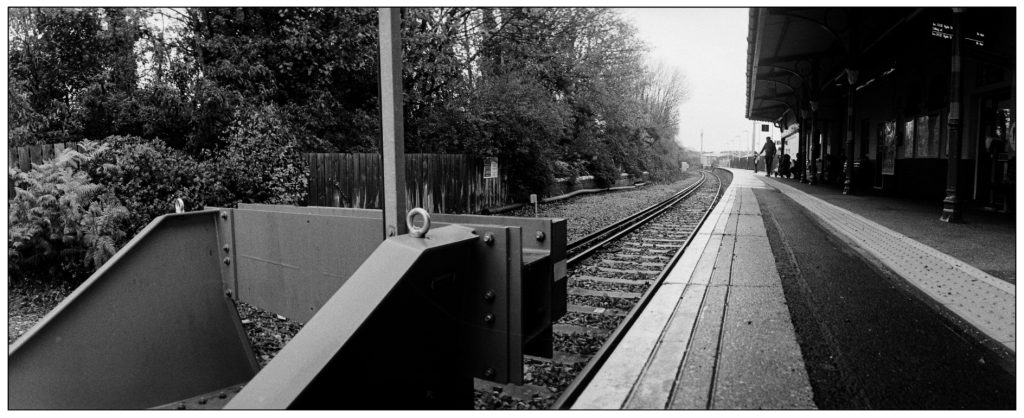
Reviewing my initial photographs provided a key insight into maximising the camera’s potential – the use of the Golden Ratio composition. The wide, sweeping 120∘ angle truly excels when you place something large and bold in the foreground, positioned to one side. This anchoring element allows the rest of the expansive scene to dramatically drift off toward the horizon. I saw this principle clearly in the photograph of the train station, and the portrait of the train driver reinforced this powerful compositional strategy.

So, with my next test, this time with Ilford Delta 400 I went to the farm to try this composition style out.
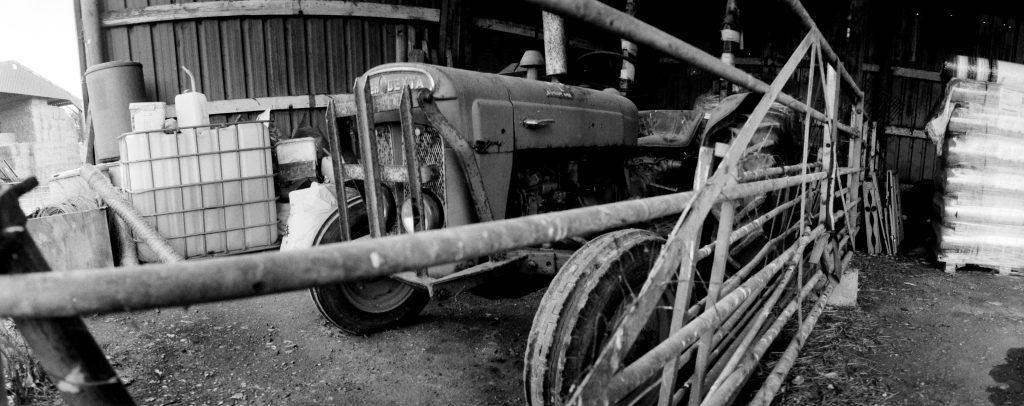
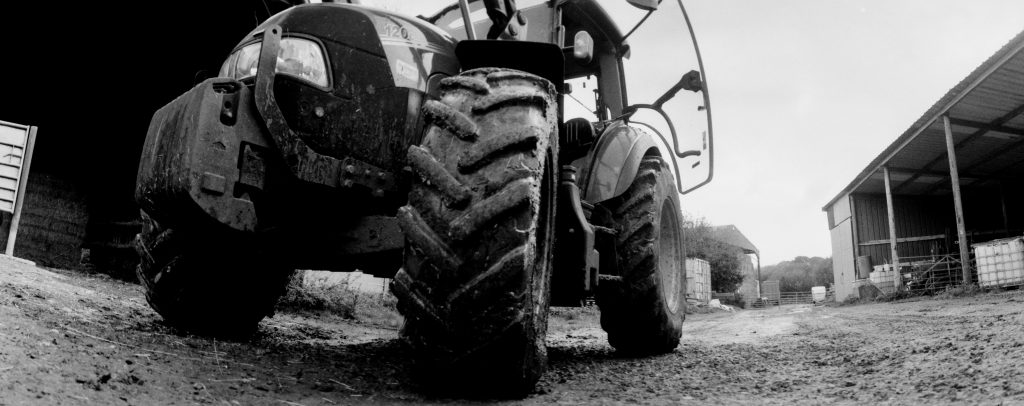
And these were taken with Dragon No1 film (100).
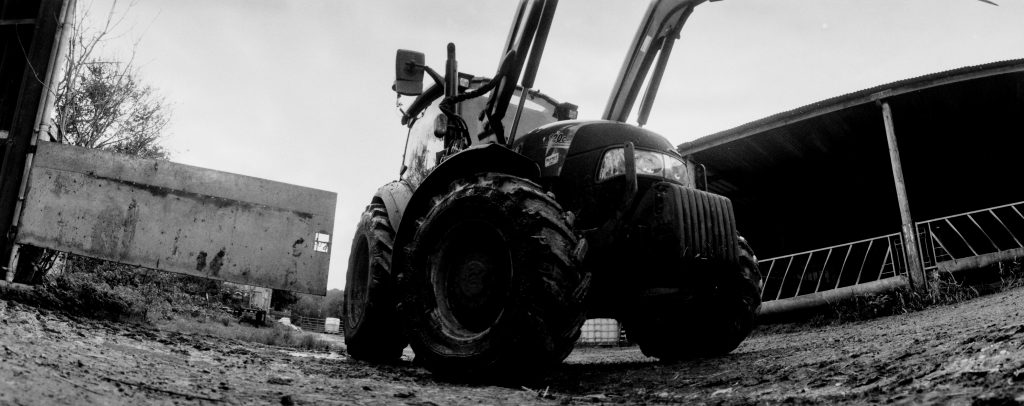
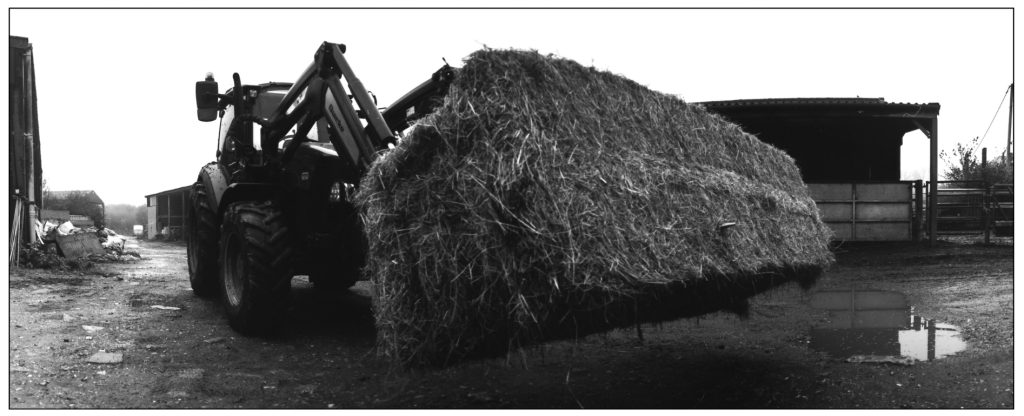
What about vertical?
I took a few vertical shots but I was far from happy with the outcome. They felt too skinny. I also noticed the curvature on the buildings and also on the bin in the middle photo.

Final thought
Did I enjoy shooting the Horizon? Absolutely! It offers a delightfully fun and no-fuss approach to photography, sharing a simple, freeing ethos similar to Pinhole or Holga cameras. Once the (correctly loaded!) film is secured, your only worries are composition and ambient light.
This brings us to the other shutter speed! A full half a second (1/2s). I tested this slow setting on a bench in a very dimly lit area, and the results were surprisingly good. However, heed this warning, if the lighting is even slightly too bright for 1/2s, you will quickly venture into severe overexposure territory. Use it judiciously, and ideally only in truly darker conditions. Unless you are shooting a 25 ISO film!
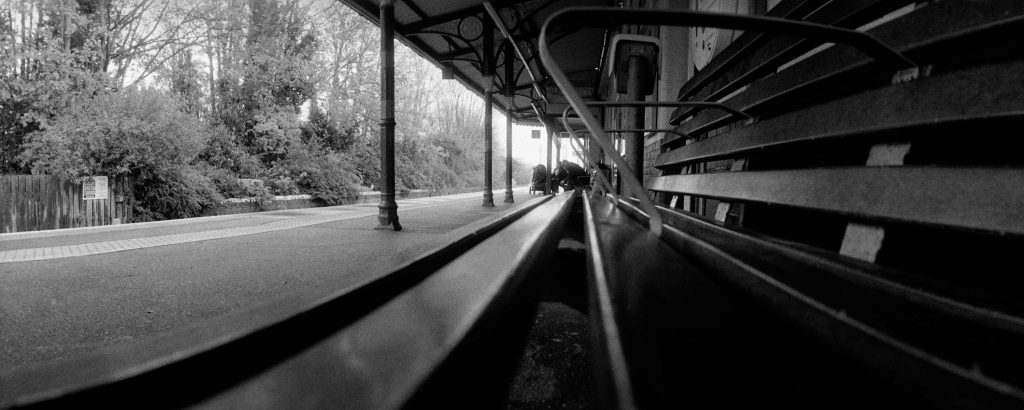

As my test shots show, the first long exposure (taken under the train station shelter) came out well, while the outdoor bench shot was naturally overexposed. I had to try, but honestly, I’m not sure how often I would use the 1/2s shutter speed in the future—especially since the camera lacks a tripod mount, making stabilisation a serious challenge.
Despite that minor limitation, I thoroughly enjoyed the experience and have a few more specific scenes I want to capture before the camera goes back to Iain.
Panoramic Inspiration: Jeff Bridges and the Widelux
This journey brings to mind actor Jeff Bridges, an avid panoramic photographer who famously uses the similar Widelux camera. His work is undeniably excellent, but it’s important to remember that his online galleries are curated from decades of shooting. I imagine he has accumulated many “failures” over the years.
This highlights a crucial point. The Lomo Horizon is likely a brilliant camera for a long-term “Panoramic Project.” By committing to shooting countless rolls across many scenes and moments, you would eventually compile enough successful, captivating images for a truly interesting picture book. Extensive use allows you to consistently capture those fleeting good moments perfectly suited for the expansive panoramic format.
Alternatively, if you already have photography projects in progress using standard formats, adding a few sweeping panoramic pictures into the mix would instantly inject an intriguing new perspective and scale into your collection.
Thanks for bring it over Iain. And thanks for bringing the Pentax 17 back.
